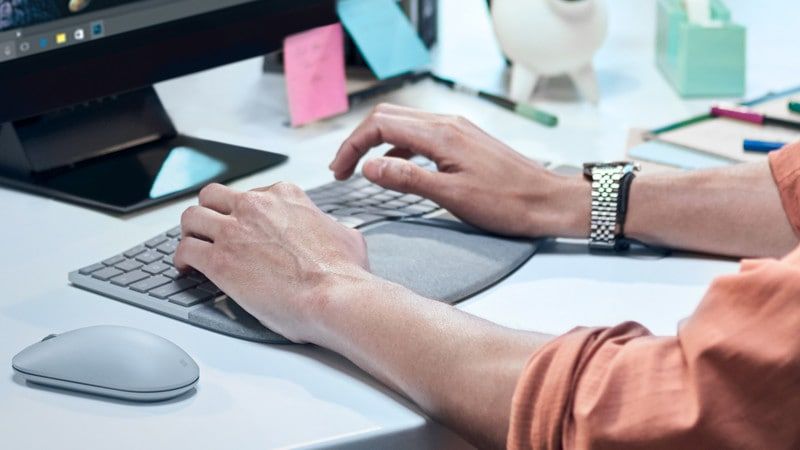

It's an often-overlooked fact that typing all day long can end up being pretty bad for your hands and wrists in the long term. To help alleviate this, we're on a continuous quest to find the best ergonomic keyboard and today we're comparing two from Microsoft, the Microsoft Sculpt and Microsoft Surface Ergonomic Keyboard.
While plenty of other companies make ergonomic keyboards (as you can see from our ranking of the best), Microsoft has a long-standing reputation as the maker of everything used in most workplaces, especially after recently expanding into computer hardware with the Surface lineup.
Ergonomic keyboards usually focus on having a more comfortable design that eases repetitive tasks, like typing, by putting your hands and wrists into more natural and comfortable positions. RSI is one of the most common problems faced by people in the UK and while an ergonomic keyboard won't fix all problems, they come close.
If you use a Windows computer for work, as so many of us do, going for a Microsoft-made keyboard is an excellent choice. Let's dive into our comparison between Microsoft Sculpt and Microsoft Surface Ergonomic Keyboard.
- Our guide to the best keyboards for everyone
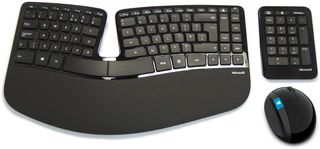
Microsoft Sculpt vs Surface Ergonomic: features
Both the Microsoft Sculpt and Surface Ergonomic keyboards are wireless. The Sculpt uses a wireless USB dongle while the Surface Ergonomic Keyboard connects via Bluetooth.
Beyond connectivity, the two keyboards have very similar feature sets: both have full-sized keys and full QWERTY layout, use AAA batteries, and include comfortable palm rests. However, the Microsoft Sculpt features a separate number pad while the Surface Ergonomic Keyboard features a number pad as part of the main keyboard.
Otherwise, you can rest assured that the keyboards are more similar than different in every other respect, thanks to being made by the same company.
Sign up to the T3 newsletter for smarter living straight to your inbox
Get all the latest news, reviews, deals and buying guides on gorgeous tech, home and active products from the T3 experts
- Our guide to the best gaming keyboards
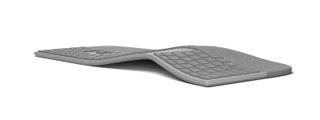
Microsoft Sculpt vs Surface Ergonomic: design
Now this is where things get interesting.
The two keyboards have similar design ideas, including the raised middle section and wrist rest, but they different fundamentally in other respects, the most notable of which is the 'split' keyboard style on the Sculpt.
To achieve an extra level of comfort when typing, Microsoft has divided the Sculpt into two halves between the G and H keys, creating a design that curves more than the Surface Ergonomic and therefore offers a better typing experience.
The Surface Ergonomic, too, includes a split between the G and H keys but it's filled with a grey dead space, rather than a gap, and on balance we prefer the Sculpt in this regard.
Elsewhere, the Sculpt has a raised reverse-tilt position that allow for far more natural wrist angles when typing. The Surface Ergonomic has slight angling, but nothing to the degree of the Sculpt.
- The best office chairs for every room
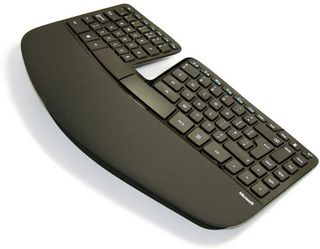
Microsoft Sculpt vs Surface Ergonomic: verdict
The Microsoft Sculpt and Microsoft Surface Ergonomic are two excellent keyboards, both of which will make anyone who wants to avoid RSI and uses Windows very happy and comfortable.
Which you choose will likely come down to a few factors.
In the Sculpt's camp, we think it's the more comfortable of the two to type on and it comes with a wireless mouse and keypad as standard, two very welcome additions. The reverse-tilted design is extremely nice to use and feels like it will protect your wrists from day one.
In the Surface's camp, anyone who wants a wireless ergonomic keyboard has probably already made their choice and the overall design and typing experience are still extremely good. If you already use a Surface, the aesthetic fits much more neatly, too.
On balance, we recommend the Microsoft Sculpt but anyone choosing the Surface Ergonomic Keyboard won't be disappointed.
Max Slater-Robins has written for T3 now on and off for over half a decade, with him fitting in serious study at university in between. Max is a tech expert and as such you'll find his words throughout T3.com, appearing in everything from reviews and features, to news and deals. Max is specifically a veteran when it comes round to deal hunting, with him seeing out multiple Black Friday campaigns to date.
-
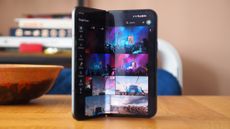 Google Pixel 10 Pro Fold renders show an early contender for foldable of the year
Google Pixel 10 Pro Fold renders show an early contender for foldable of the yearEven though it might not be the slimmest, it could be the sexiest
By Britta O'Boyle Published
-
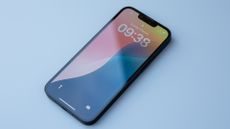 Your iPhone gets some new tricks - here’s what it can do now
Your iPhone gets some new tricks - here’s what it can do nowThe new emojis and priority notifications are probably our favourite
By Britta O'Boyle Published
-
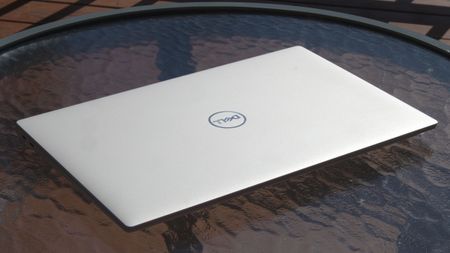 Dell kills its biggest brand in shock move
Dell kills its biggest brand in shock moveDell's CES news feels fairly massive
By Max Freeman-Mills Published
-
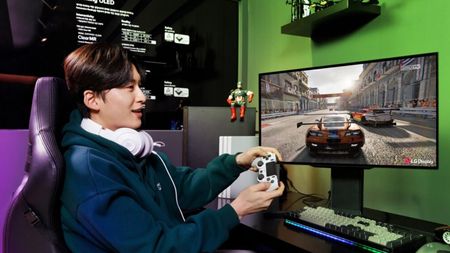 LG plans to take gaming to the next level with 480Hz OLED displays
LG plans to take gaming to the next level with 480Hz OLED displaysSuper smooth gaming
By Andy Sansom Published
-
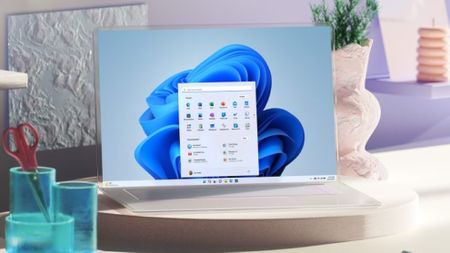 Windows 11 users just got a huge free performance-enhancing upgrade
Windows 11 users just got a huge free performance-enhancing upgradeWindows' annual update will make your PC or tablet better –and it's available right now
By Carrie Marshall Published
-
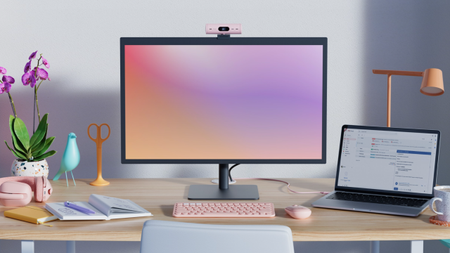 Logitech’s new webcams look like the ultimate working from home upgrade
Logitech’s new webcams look like the ultimate working from home upgradeLogitech's new Brio 500 webcams come in fetching colours with headphones to match
By Carrie Marshall Published
-
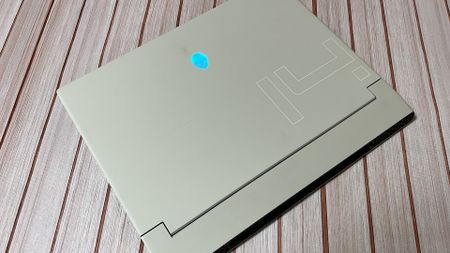 Alienware x14 laptop review: peak gaming power in a svelte package
Alienware x14 laptop review: peak gaming power in a svelte packageThe Alienware x14 packs a lot of gaming power in a compact, stylish laptop, but it lacks battery life
By Richard Baguley Published
-
 Gmail users are getting this cool free upgrade
Gmail users are getting this cool free upgradeThe new Gmail has gone from opt-in to opt-out, and it's rolling out to everybody
By Carrie Marshall Published
-
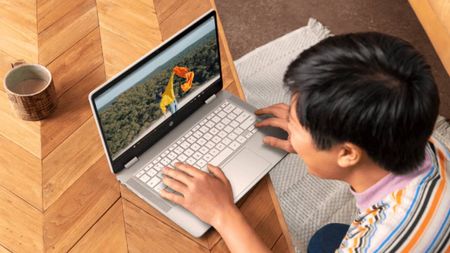 Chromebook users just got this great free upgrade for Android Phones
Chromebook users just got this great free upgrade for Android PhonesThe Chrome/Android ecosystem is getting better at bringing your devices and data together
By Carrie Marshall Published
-
 MacBook Air and iPad Pro rumor says huge display upgrades are incoming
MacBook Air and iPad Pro rumor says huge display upgrades are incomingApple's investing heavily in next-gen display tech for future iPad and MacBook models
By Carrie Marshall Published
